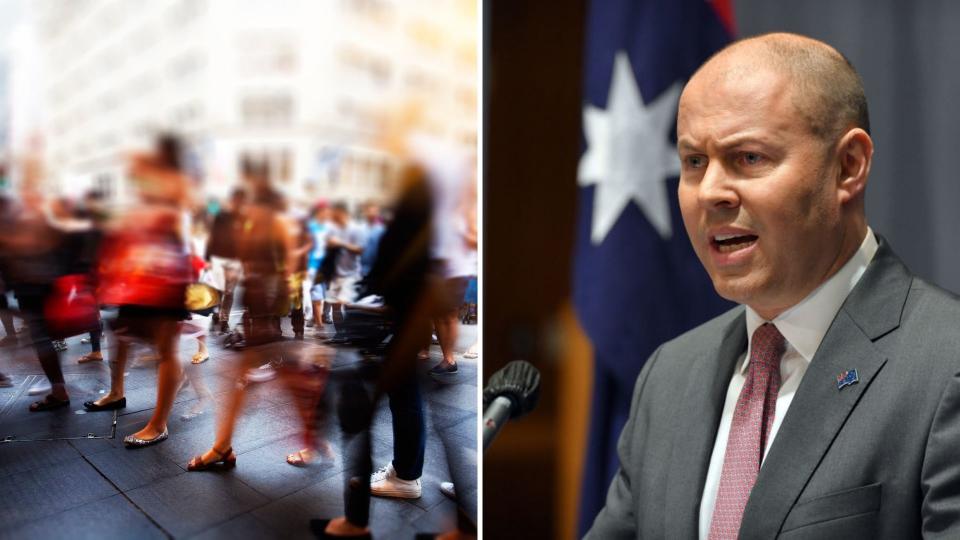‘Women get less than recycled trash in Budget’

It was the Federal Budget that had the right conversation but it failed on action for women.
About 20 minutes into delivering his Budget speech, Treasurer Josh Frydenberg acknowledged that “Australian women made up the majority of those who lost their jobs during this crisis.”
Also read: Budget 2020: Winners and losers
Also read: 11 million Aussies to get up to $2.7k tax back: When you'll get yours
He then announced that $240 million would be spent over five years on supporting female workforce participation.
But the sum has been described as insignificant given the worsening gender divide on financial security because of Covid-19 and the comparative spend on other Budget measures, including waste management.
“This is a Budget that is spending more on recycled rubbish than it is on women,” says Danielle Wood, Chief Executive of the Grattan Institute.
The Government will provide $249.6 million over four years from 2020-21 to support domestic waste management, reduce pressure on our environment and create economic opportunities for Australians.
Since the pandemic started, women’s full-time employment numbers have dropped to where they were in 2018 compared to 12 months ago for men. The gender pay gap has also widened slightly, and in doing so it’s raised concern that the gender disparity in superannuation savings will only get worse than the current 30 per cent gap.
In addition to that, surveys have shown that women are bearing the brunt of unpaid work due to containment measures and are now more likely to suffer from domestic violence than was the case prior to the pandemic.
“I would have liked to have seen more money to support women’s participation in the workforce,” says Wood.
“This is a Budget that has missed the opportunity to support a rebound in jobs in industries such as the arts, retail and hospitality which are also female dominated.
“Instead we have targeted measures for male dominated sectors such as construction, transport, manufacturing and infrastructure.
“There is already a full pipeline of projects in these industries.
“It seems anything with a hardhat gets money and anything that is caring doesn’t.”
In August, the Grattan Institute called on the Federal Government to spend an extra $5 billion a year on childcare subsidies to help enable more women to do more paid work and to help lift the economy out of the Covid-19 recession
The Institute says the payoff would be an $11 billion-a-year increase in gross domestic product (GDP) from the boost to workforce participation – and $150,000 in higher lifetime earnings for the typical Australian mother.
Joanne Masters, Chief Economist at Ernst & Young agreed that the Budget had little in it to directly benefit women affected by Covid-19 job cuts.
“The Budget strategy is around creating jobs across the economy,” she says.
“While there are specific measures to support young Australians back into jobs, direct measures for females who have lost their job or left the workforce were absent.
“Moreover, the refreshed Women’s Economic Security Statement 2020 provides a disappointing $240.4 million in funding over five years.”
Among the measures announced, many are not new ideas, instead additional funding has been allocated as part of the $240 million package.
Additional funding is certainly welcome but the argument is that much more is needed given the risk of a worsening financial equality in Australia.
The Financy Women's Index notes that for every month of the pandemic the timeframe to achieve economic equality has widened by one year.
Some of the notable positive Budget announcements:
· $50 million on scaling up the Women’s Leadership and Development Program to support women’s job creation, including in male‑dominated industries.
· $2.1 million on establishing a Respect@Work Council to help address sexual harassment in the workplace.
· The existing Boosting Female Founders initiative will be expanded to support female entrepreneurs.
· More funds for the existing women in STEM careers program such as $10 million in grants for the Women in STEM and Entrepreneurship (WISE) grants program to deliver at least 20 additional projects to increase women’s participation in the STEM sector.
· $90.3 million over three years from 2020-21 for concessional work test arrangements for Paid Parental Leave in response to Covid-19.
· $2.4 million in 2020-21 to Football Federation Australia to commence the planning and delivery phase of the FIFA Women’s World Cup 2023.
What other areas will women benefit?
· 314.2 million in 2020-21 to support Victorian Early Childhood Education and Care (ECEC) services to remain viable as Covid-19 restrictions ease in the state.
· $10 million over three years from 2020-21 to extend the Supporting Television and Online Coverage of Under-represented Sports Program to provide further support for the broadcasting of underrepresented sports on subscription television, including women's sports.
· Women will also benefit from the bringing forward of stage 2 tax cuts and one-off tax benefit for low-to-middle income earners. Young Australians and women are more likely to be low to middle income earners.
For more Yahoo Finance stories on the 2020 Federal Budget, visit here.
Bianca Hartge-Hazelman is the author of the Financy Women’s Index and founder of women’s money website financy.com.au. She is also a proud contributor and supporter of Yahoo Finance’s Women’s Money Movement.

 Yahoo Finance
Yahoo Finance 